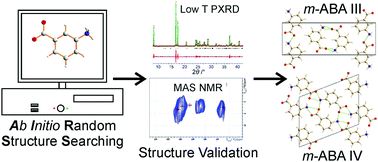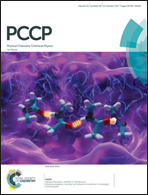Ab initio random structure searching of organic molecular solids: assessment and validation against experimental data†
Abstract
This paper explores the capability of using the DFT-D ab initio random structure searching (AIRSS) method to generate crystal structures of organic molecular materials, focusing on a system (m-aminobenzoic acid; m-ABA) that is known from experimental studies to exhibit abundant polymorphism. Within the structural constraints selected for the AIRSS calculations (specifically, centrosymmetric structures with Z = 4 for zwitterionic m-ABA molecules), the method is shown to successfully generate the two known polymorphs of m-ABA (form III and form IV) that have these structural features. We highlight various issues that are encountered in comparing crystal structures generated by AIRSS to experimental powder X-ray diffraction (XRD) data and solid-state magic-angle spinning (MAS) NMR data, demonstrating successful fitting for some of the lowest energy structures from the AIRSS calculations against experimental low-temperature powder XRD data for known polymorphs of m-ABA, and showing that comparison of computed and experimental solid-state NMR parameters allows different hydrogen-bonding motifs to be discriminated.

- This article is part of the themed collection: 2017 PCCP HOT Articles


 Please wait while we load your content...
Please wait while we load your content...